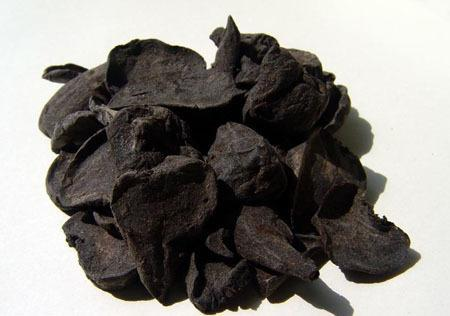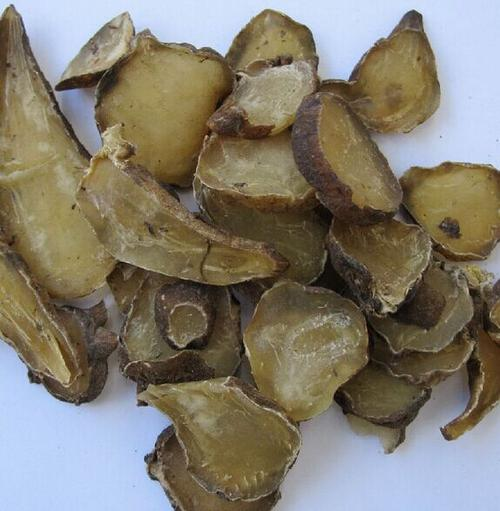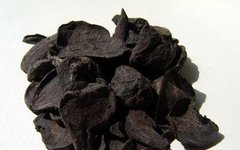————————————————————————————————————————————————————————————————–
Shu Fu Zi (熟附子) is a medicinal material obtained from the Chinese herb Fu Zi (附子) after it has been stir-fried or steamed. Its toxicity is slightly lower than that of raw Fu Zi, but it retains most of the medicinal components and exhibits excellent therapeutic effects. However, it also has some side effects, so it is important for individuals to fully understand its benefits and potential adverse effects before consumption.
[Reminder] Shu Fu Zi is toxic; use with caution!
Effects and Functions of Shu Fu Zi
1. Prevention of Thrombosis
Consumption of Shu Fu Zi allows the absorption of various medicinal components. Some trace elements it contains can prolong the consumption time of thrombin in the body, enhance the body’s anticoagulant capacity, and increase platelet activity. It can prevent the formation of thrombus in the blood, which is beneficial for maintaining cardiovascular health.
2. Prevention of Myocardial Ischemia
Myocardial ischemia is a common disease in humans, but Shu Fu Zi has a protective effect on the myocardium. It can enhance the myocardium’s tolerance to hypoxia, reduce its oxygen consumption, promote vasodilation, accelerate blood circulation, and prevent myocardial ischemia, thereby lowering the incidence of heart disease.
3. Antioxidant Properties
Shu Fu Zi can enhance the body’s antioxidant capacity. It contains alkaloids that are natural antioxidants, which can eliminate free radicals in the body and prevent lipid oxidation, thereby improving the activity of tissue cells and slowing down the aging process.
Side Effects of Shu Fu Zi
Shu Fu Zi is an extremely effective medicinal material. In addition to the benefits mentioned above, it can relax smooth muscles, relieve cough, and improve digestive system function, which is beneficial for maintaining health. However, it is a toxic herb and can be harmful to the body. Excessive intake can lead to severe poisoning reactions and may even be life-threatening.
Fu Zi is pungent and hot, with a tendency to disperse and not hold. It is effective in reviving yang and is processed from the tuberous roots of the perennial herb Aconitum. It is mainly produced in Sichuan, with cultivation also in Hubei and Hunan provinces. Harvesting occurs from late June to early August, where the fibrous roots and soil are removed, and it is then processed into salt Fu Zi, black slices, and white slices.
Taste and Properties: Pungent, hot; toxic. It enters the Heart, Spleen, and Kidney meridians.
It supplements fire and revives yang, dispels cold and alleviates pain, and warms the Kidney and strengthens yang. It is used for counterflow of yang, Spleen yang deficiency, Kidney deficiency with edema, cold dampness causing pain, cold abdominal pain, and insufficient Kidney yang.
Dosage and Administration: 13-15g
Clinically, this product is pungent, hot, and dry, supplementing fire and dispersing cold, assisting Heart yang, warming Spleen yang, and warming Kidney yang. It can reach both the exterior and interior, warming and circulating the yang qi throughout the body. Therefore, it is used for true cold conditions, especially for reviving yang and rescuing from counterflow.
Traditional Recipe 1: Shock
Use 30% Shen Fu injection (produced by Ya’an Pharmaceutical Factory in Sichuan) 10-20ml added to 20ml of 5-10% glucose injection, normal saline, or Ringer’s solution for intravenous injection, repeating every 0.5-1 hour if necessary; or use 50-100ml of this product added to 250-500ml of the above liquids for intravenous drip. (Source: Journal of Traditional Chinese Medicine)
Traditional Recipe 2: Syndrome of Sick Sinus Syndrome
Daily use of Fu Zi injection 8 (each 2ml contains 4g of raw material) added to 500ml of 5% glucose injection for intravenous drip, and intramuscular injection of 4g of this product every night, for 1-2 treatment courses lasting 2 weeks. (Source: Journal of Integrated Traditional Chinese and Western Medicine)
Traditional Recipe 3: Chronic Pharyngitis
Boil single herb Fu Zi in salt water, taking small sips daily, 1-3g; or combine with Yang Yin Qing Fei Decoction for oral administration. (Source: Journal of Traditional Chinese Medicine)
Traditional Recipe 4: Alopecia Areata
Prepare 30g of processed Fu Zi and 30g of bone fracture juice, grind into a coarse powder, add 60g of vinegar, and soak for 7 days. Use cotton to dab the solution on the affected area at least 3 times a day. (Source: Shandong Journal of Traditional Chinese Medicine)
↓↓↓↓↓
.
Recommended: For more folk TCM health information, scan the QR code below to learn more↓↓↓↓↓


The knowledge passed down from our ancestors is often simple yet practical!
If you find it useful, save it and share it with your friends; it can truly help everyone!
Disclaimer: This article is reproduced from the internet and published materials. If there is any infringement, please contact us for removal. The various prescriptions and recipes mentioned are for informational sharing only and do not constitute medical advice, recommendations, or guidance. Please use them under the guidance of a physician.

